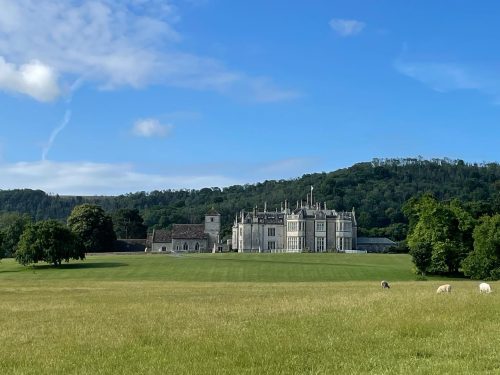Science through the looking glass
Posted by Eva Pillai, on 17 August 2022
The method was straightforward: take a bunch of writers, novelists, a playwright, science communicators and scientists from all over the world, from fields as diverse as astrophysics and climate science to materials engineering, neurobiology, and evolution, confine them to a 16th century manor, and get them talking. The result: The Company of Biologists’ whacky and wonderful Creative Science Writing Workshop.

Good scientific writing has the power to help communities make more informed decisions, and a creative route could make it more accessible and exciting for all. But here, without the certainties of a regular science meeting where everyone shares a common interest in a method, organism or question, and data and information that forms the focus of most scientific discussions, what would happen was anyone’s guess.
Any disquiet quickly evaporated in the opening session where everyone introduced themselves through stories, childhood memories, and mementos: a bottled book, a handmade urn, the steady pulse of a ticking metronome, the clinking beads of a treasured necklace, a traditional Indian kolam drawn in flour before our eyes. It was immediately clear that despite our diverse backgrounds and experiences, everyone shared a passion for storytelling and science in all its forms. The Workshop began with a bang!
The programme included a variety of topics and activities. We read S.J. Gould, Primo Levi and the brilliant Karen Joy Fowler, looking for the ingredients of great writing and pondering the authors’ process and intent. We critiqued the work of other delegates, providing structured feedback – a rather nerve-racking exercise when one considers the differences between academic and creative writing. In conventional science writing, the authors present new facts and relationships that help us better understand our world, without ever revealing themselves. In creative writing the opposite holds true; every piece exposes the writer, their style, their quirks of character, beliefs, and passions. This Workshop managed the juxtaposition remarkably well.
There were also sessions on structuring writing, getting published, and the role of agents. Most importantly, there was time to write, review, and revise. Inside oak-panelled rooms, within the verdant grounds, and in the sunny conservatory, relationships grew, word counts climbed, and inspiration abounded.
Over a period of three and a half days, the Workshop exposed delegates to the world of writing and publishing. Aspiring writers learned from one another as well as from the established writers – who were incredible mentors. It was a journey that traversed science and writing, lab and the field, life and the page, lyrical prose and cold hard facts. In doing so, a new community was formed.


 (No Ratings Yet)
(No Ratings Yet)